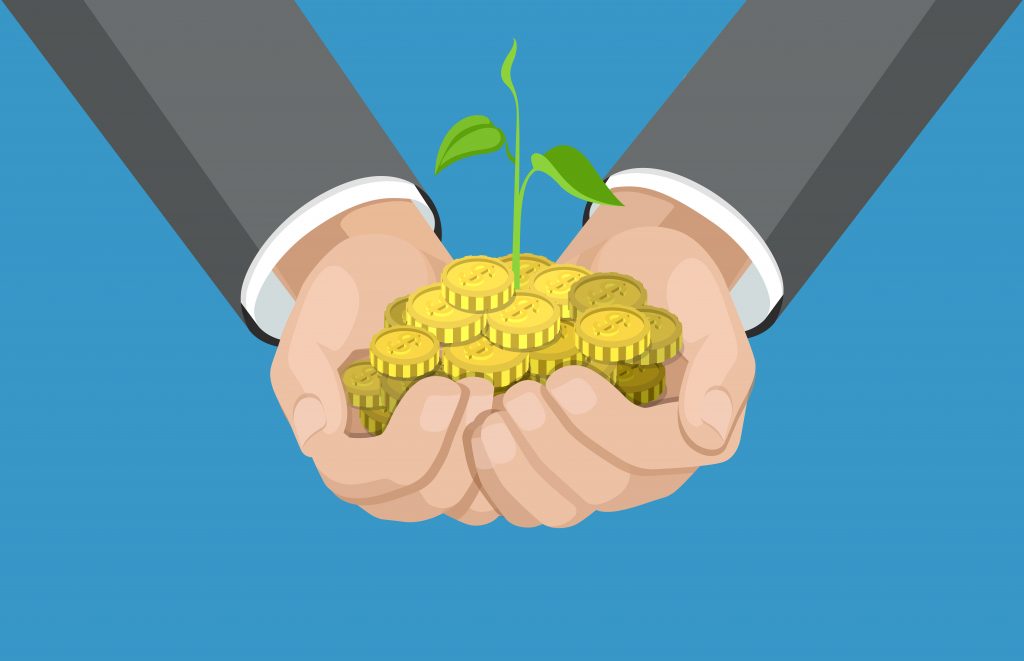
The present era is characterised by escalating environmental degradation and the worsening effects of climate change. In recent years, the world has experienced the catastrophic consequences of climate change. For example, 2024 was recorded as the hottest year on record, accompanied by devastating wildfires in California, widespread flooding in Nepal, Sudan, and Spain, rising sea levels, and heavy snowfall and flooding in Saudi Arabia. The global community’s mounting concerns regarding climate change and social responsibility underscore the urgency for financial institutions, particularly Banks, to re-evaluate their traditional approaches to decision-making.
In this regard, a significant area to address for the environmental and economic issue could be green financing, as green finance is an approach for organised investment activity for transitions toward low-carbon, climate, and inclusive development pathways. Conceptually, green finance is not limited to the acquisition and utilisation of funds for activities that protect the environment and deliver a fair return to investors or lenders. Hence, the primary objective of green finance is to increase the level of financial flows from financial institutions to economic agents involved in projects and investments that preserve the environment towards achieving the Sustainable Development Goals.
The initiatives have been taken at the national as well as international level for promoting the importance of green financing as a means of ensuring environmental and economic sustainability. The climate finance initiative within the Paris Agreement (2015), followed by the European Union’s European Green Deal, aimed at achieving carbon neutrality by 2050, has significantly encouraged green finance. Similarly, China’s green finance initiative, led by the People’s Bank of China, supports green credit and investments to achieve a carbon-neutral economy by 2060. Additionally, the UN Principles for Responsible Banking urge financial institutions to integrate sustainability into their business models and funding strategies. Furthermore, the Green Climate Fund, established under the United Nations Framework, provides funding to mobilise both public and private finance to support large-scale green projects, representing key initiatives promoting green financing globally
Nepal has recently been concentrating more on green, resilient and inclusive development initiatives. The Nepal Investment Summit 2024, held on April 28-29 in Kathmandu, put significant emphasis on the area of green financing and sustainable investment opportunities. Nepal’s commitment to promoting green and sustainable financing was highlighted and supported by both regulatory initiatives and international partnerships. As a result, Nepal Rastra Bank has published the Nepal Green Finance Taxonomy 2024 to provide an approach and processes for regulators, financial institutions, and market participants to shift the investment paradigm towards investments in green finance by allocating resources through their economic activities in Nepal.
Nepal’s financial system is primarily driven by banks, with the majority of their assets allocated to sectors that are considered high-risk in terms of environmental and climate impacts, such as industries, construction, hydropower, and real estate. This exposes banks to significant environmental and climate-related risks. According to the latest Supervisory Information System (SIS) and Unified Directives 2021 issued by Nepal Rastra Bank (NRB), the lending of Banks and Financial Institutions (BFIS) is classified into 18 sectors. NRB has also emphasised directed lending to key areas like agriculture, energy, tourism, and small, micro, cottage, and medium-sized enterprises (MSMEs). However, there is currently no structured approach to track or monitor investments in “green” sectors.
However, the introduction of various green investment areas and approaches, as well as a process for investment in different green products in the green finance taxonomy 2024, is expected to help BFIS shift their resources in the area of green financing. Nepal’s Taxonomy mandates that Banks and Financial Institutions (BFIs) set annual targets and measure their progress in green finance, with the results to be reported to the Nepal Rastra Bank (NRB). Additionally, the monitoring, reporting, and supervision section of the taxonomy specifies that market participants, such as BFIs, are responsible for consistently tracking the use of taxonomy-aligned financing by their clients, ensuring that funds are directed toward green activities. As a result, the reporting requirements outlined by NRB in the Taxonomy, Environmental and Social Risk Management Guidelines 2022, along with the lending requirements for priority sectors, are expected to create an environment that encourages BFIs to allocate resources to green financing in Nepal.
Does green financing help in sustainability?
Green finance is a recent innovation that offers an alternative financing pathway to individuals, corporations and governments willing to fund and invest in green activities or low-carbon activities. The benefits of green finance include: the distribution of funds to preserve the environment, the flow of funds to sustainable trade and investment activities, low-risk financing, and the development of green investment and financing instruments.
Sustainability can be viewed from two distinct angles: environmental sustainability and economic sustainability. From an environmental sustainability standpoint, green financing helps in climate change mitigation by investing in projects like flood defence and resilient infrastructure and carbon capture and storage technologies. Similarly, it contributes to the reduction of carbon emissions by funding projects such as solar power plants, wind farms, hydropower projects, geothermal energy, bioenergy, and biomass plants. Additionally, it promotes energy efficiency by investing in energy-efficient building designs and retrofitting, upgrading industrial machinery to reduce energy consumption, and supporting energy storage technology projects.
Further, green financing enables water conservation and management through investments in water purification and desalination plants, rainwater harvesting systems, sustainable agricultural irrigation systems, and wastewater treatment projects. Furthermore, it supports sustainable transportation, such as electric vehicles, and pollution control through air and water pollution systems, as well as technologies designed to reduce industrial emissions. What’s more, green financing fosters a circular economy by investing in sustainable supply chain initiatives, as well as recycling, reusing, and upcycling efforts
Similarly, green financing contributes to economic sustainability by promoting a resilient, inclusive, and environmentally friendly economy. Investments in green infrastructure, solar power plants, hydropower projects, geothermal energy, energy efficiency, sustainable supply chains, and renewable energy stimulate economic activity, drive innovation, and significantly boost a country’s GDP. Additionally, it supports the creation of new jobs in these sectors. Businesses and households will experience substantial cost savings through energy-efficient projects that consume less energy, thereby reducing operational costs. Green financing supports SME’s that are engaged in sustainable projects, promoting inclusive economic development and reducing inequality. Likewise, green financing boosts innovation and technology development because green finance itself is an innovative concept and it encourages the development of innovative solutions in energy, transportation, manufacturing and other areas.
Aligning with the goal of SDG’s, a country focusing on green investment shall have an opportunity to attract different domestic and foreign investors, hence, it increases the investment flows in the country. For example, the Rawa solar project of India, one of the largest solar parks globally, created local jobs and contributed to India’s energy security and economic sustainability. Wind power expansion project of China created jobs, reduced air pollution, and supported China’s transition to low low-carbon economy. The green bond for climate action of France, issued in 2017, attracted international investors and boosted economic activity.
Green financing, by funding projects that promote sustainable development, helps balance the needs of the environment, finance, and development. It contributes to the preservation of natural resources, encourages the use of renewable energy, and works to reduce human exploitation of the environment. As a result, it becomes an effective tool for achieving sustainable development goals. Therefore, green finance offers both economic and environmental benefits to countries. It expands access to eco-friendly goods and services for individuals and businesses, facilitates a fair transition to a low-carbon society, and fosters more socially inclusive growth.
Green finance plays the transformative role in fostering a sustainable and resilient economy. By understanding and leveraging the multitude of green financing options, investors can make meaningful contributions to environmental sustainability while achieving competitive financial returns. Despite the benefits of green financing, challenges such as regulatory and policy barriers, greenwashing, limited access due to weak financial systems, insufficient infrastructure, lack of technical expertise, and the conflict of interest between profit vs. sustainability remain. Addressing these challenges requires coordinated efforts from governments, financial institutions, businesses, and international organisations. It is also important to recognise that green finance is just one component of sustainable finance for development. Alongside green finance, other sustainable finance options, such as social finance, blue finance, and digital finance, should also be considered to fully achieve the objective of both economic and environmental sustainability.


















